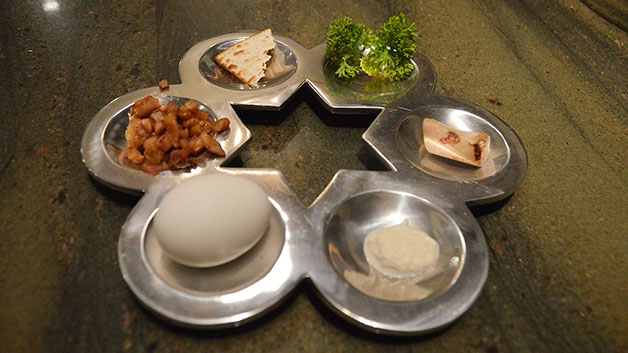New Orleans celebrates Passover in many ways
The Seder meal consists of different foods that represent elements of Jewish history. This meal is traditionally eaten on the first night of Passover and meant to provide a link to Jewish ancestors.
April 9, 2015
Tulane Hillel and the New Orleans Jewish Community Center both look to provide people in New Orleans with different ways to celebrate Passover.
Pesach or Passover is an eight-day holiday that commemorates the journey of Jewish people out of slavery in Egypt.
This year, Passover began on the evening of April 3 and ends on the evening of April 11. The holiday not only helps to commemorate and celebrate the past, it also forces devotees to reflect on their internal shackles, even though they no longer wear physical shackles.
Caleb Bloomfield, English senior, said remembering Jewish history is important in celebrating Passover.
“Oftentimes on Passover, we say ‘you can take the Jew out of Egypt, but you can’t take Egypt out of the Jew,’” Bloomfield said.
Andrea LeVine, director of Jewish programming and curriculum, said Tulane Hillel encourages students to imagine they were in Egypt, hear the stories of their ancestors and celebrate that they are now free.
The JCC hosted a seminar for parents about the holiday, and the nursery school has a Passover sing-along.
Even though this holiday has ancient roots, Bloomfield said it is still relevant to modern times. He said Passover is a way to reflect on and confront different aspects of slavery and racism that are still prevalent and that are brought to light by issues the Jews faced.
According to LeVine, during this holiday, there are traditions that depict what Jewish people had to go through while they were slaves. Seder is a dinner that allows diners to put themselves in the place of their ancestors by eating certain symbolic foods.
Although Tulane Hillel did not host its own Seder meal this year, the meal is traditionally consumed on the first day of Passover.
For example, LeVine said that during Seder, charoset is served, which is a sweet paste made up of nuts, apples and wine. This represents the mortar used on the bricks of the buildings that the slaves would build.
Another aspect of the Seder meal is parsley dipped in salt water, called karpas. It represents the lowly origins of the Jewish people and the salt water signifies the tears of the slaves.
“I think it’s a really important time for Jewish to come together and not separate themselves and to have this dialogue with each other about what is going to help the Jewish people to move forward,” Bloomfield said.
LeVine said that Judaism is more concerned with questions rather than with answers.
“We need a moment of conversation about what are the freedoms that we take for granted, and taking a moment to think about modern day slavery going on in the world,” LeVine said.
Liba Kornfeld, director of Jewish family life at the Jewish Community Center, said Jewish people join every other group that celebrates earning freedom, but how they do it is what is different.
“I don’t think that the idea that Jewish have different opinions has anything to do with how they feel about the celebration of freedom. More about that comes from how people celebrate,” Kornfeld said.







